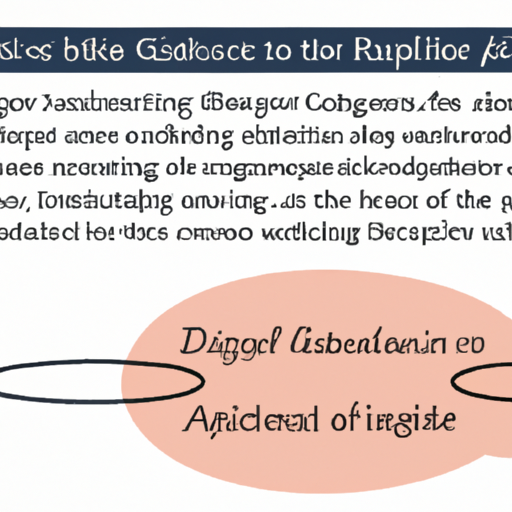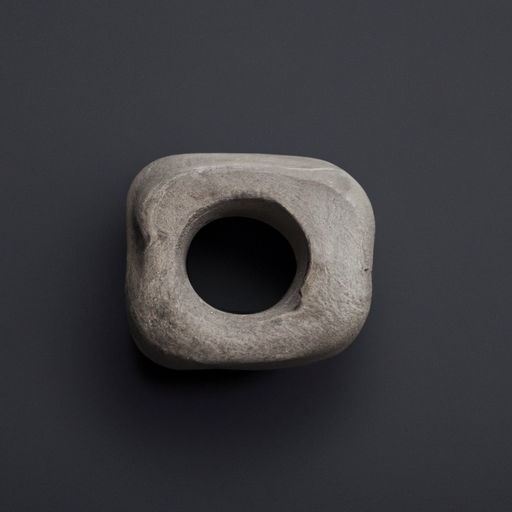As you hit the open road, it’s important to consider the age of your tires and how it can affect both the performance and safety of your vehicle. Over time, even if your tires appear to be in good condition, they can become compromised due to aging. This article will explore the various ways in which tire age impacts performance and safety, highlighting the importance of regularly checking and replacing your tires to ensure a smooth and secure driving experience.
Understanding Tire Aging
What is tire aging?
Tire aging refers to the natural deterioration of tires over time due to various factors. As tires are exposed to environmental conditions and undergo regular wear and tear, they gradually lose their performance capabilities and become less safe. It is crucial to understand tire aging to ensure the optimal performance and safety of your vehicle.
Causes of tire aging
Several factors contribute to the aging of tires. One significant cause is exposure to sunlight and UV rays, which can lead to the breakdown of rubber compounds in tires. Another factor is temperature fluctuations, especially extreme heat or cold, which can affect the structural integrity of the tire. Additionally, poor maintenance and improper storage conditions can accelerate tire aging. Understanding these causes can help you take proactive measures to extend the lifespan of your tires.
Effects of Tire Age on Performance
Decreased traction
As tires age, the rubber compound used to provide grip on the road gradually hardens. This hardening process results in decreased traction, especially on wet or slippery surfaces. Reduced traction can compromise your ability to maintain control of your vehicle, increasing the risk of accidents. It is essential to monitor the age of your tires and replace them when necessary to ensure optimal traction and safety on the road.
Reduced handling and responsiveness
Aging tires also tend to have reduced handling capabilities and responsiveness. As the rubber compound hardens and wears down, the tire’s ability to provide precise steering control diminishes. This can result in a sluggish response to steering inputs, making it harder to navigate corners or sudden maneuvers. To maintain optimum handling and responsiveness, it is crucial to keep track of your tire’s age and replace them at the appropriate time.
Increased road noise
An often overlooked effect of tire aging is increased road noise. As tires wear down, the tread patterns become shallower, causing more contact between the tire and the road surface. This increased contact generates more noise, resulting in a louder and less comfortable driving experience. By replacing your old tires, you can significantly reduce road noise and enjoy a smoother, quieter ride.
Poor fuel efficiency
Tire age can also impact fuel efficiency. Aging tires with worn-out treads require more energy to roll, resulting in increased rolling resistance. As a result, your vehicle’s engine has to work harder to maintain speed and consume more fuel. By regularly replacing old tires, you can improve your vehicle’s fuel efficiency, saving you money in the long run.

Effects of Tire Age on Safety
Increased risk of blowouts
Old tires are more susceptible to blowouts, which can have severe consequences while driving. The aging process can cause the tire’s internal structure to weaken, making it more prone to sudden failures. Blowouts can lead to loss of control, accidents, and potentially life-threatening situations. To ensure your safety on the road, it is vital to be aware of your tire’s age and replace them before they become a risk.
Higher chance of hydroplaning
Hydroplaning occurs when a vehicle’s tires lose contact with the road surface due to water buildup, resulting in a loss of control. Aging tires with worn-out tread patterns are more prone to hydroplaning, as they are unable to disperse water effectively. This significantly increases the risk of accidents, especially during heavy rain or wet road conditions. Regularly inspecting and replacing old tires is crucial to minimize the chances of hydroplaning and ensure your safety.
Reduced braking ability
Tire age can also affect your vehicle’s braking performance. As tires wear down, the ability to provide adequate grip and traction diminishes, leading to longer braking distances. This can be particularly dangerous during emergency braking situations, where every inch counts. To maintain optimum braking ability and maximize your safety, it is essential to replace old tires with sufficient tread depth.
Greater vulnerability to punctures
Aging tires tend to develop cracks, cuts, and other forms of damage that make them more vulnerable to punctures. Even a small puncture can result in a flat tire, compromising your safety and leaving you stranded on the road. As tires age, their overall durability and resistance to punctures decrease. Regular inspections and timely replacement of worn-out tires can help minimize the risk of punctures and ensure a safer driving experience.
Determining Tire Age
Tire manufacturing date codes
To determine the age of your tires, you can refer to the tire manufacturing date codes. These codes are usually imprinted on the sidewall of the tire and represent the week and year of manufacture. The U.S. Department of Transportation (DOT) requires all tire manufacturers to include these codes for easy identification. Understanding tire manufacturing date codes can help you monitor the age of your tires and determine when it’s time for a replacement.
Factors that accelerate tire aging
In addition to chronological age, several factors can accelerate tire aging. Exposure to sunlight and UV rays can accelerate the breakdown of rubber compounds, leading to premature aging. Extreme temperatures, such as excessive heat or cold, can also cause tire aging. Poor maintenance practices, such as underinflation or overloading, can further accelerate the process. Being aware of these factors and taking preventive measures can help you extend the lifespan of your tires.

Tips for Extending the Life of Your Tires
Regular tire maintenance
Regular tire maintenance is essential to ensure longevity and optimal performance. This includes routine inspections for any signs of damage or wear, maintaining proper tire pressure, and adhering to rotation schedules recommended by the tire manufacturer. Regular maintenance not only helps extend the life of your tires but also enhances your vehicle’s overall safety and performance.
Proper storage
Proper storage is crucial when it comes to preserving the quality of your tires during periods of non-use. Tires should be stored in a cool, dry, and clean environment away from direct sunlight or UV exposure. It is recommended to keep tires off the ground and stacked horizontally to prevent distortion. Additionally, tires should be stored away from any chemicals, solvents, or oils that could damage the rubber compounds.
Avoiding extreme heat and cold
Extreme heat and cold can significantly impact tire aging. Whenever possible, avoid exposing your tires to prolonged periods of extreme temperatures. If you live in an area with extreme climate conditions, consider using climate-controlled storage facilities for your tires. By minimizing exposure to extreme heat and cold, you can help extend the life of your tires and maintain their performance and safety.
Importance of Regular Tire Inspections
Visual inspection
Regular visual inspections can help identify any visible signs of tire damage or wear. Look out for cracks, bulges, cuts, or uneven wear patterns on the tire’s surface. These may indicate potential tire aging issues and should be promptly addressed. Additionally, inspecting the tire sidewall for any signs of weathering or deterioration is essential. Visual inspections are an essential component of maintaining tire safety and preventing potential accidents.
Tire pressure check
Maintaining proper tire pressure is crucial for both safety and tire longevity. Regularly checking your tire pressure, ideally once a month, can ensure that your tires are properly inflated. Underinflated tires increase the risk of tire damage and compromise your vehicle’s handling and fuel efficiency. On the other hand, overinflated tires can lead to uneven wear and reduced traction. By keeping your tires at the recommended pressure levels, you can maximize their lifespan and optimize your vehicle’s performance.
Tread depth measurement
Measuring tire tread depth regularly is vital to gauge the remaining life of your tires. The minimum tread depth requirement in most countries is 1.6 millimeters, but it is recommended to replace tires when the tread depth reaches 3-4 millimeters for better safety and performance. You can use a tread depth gauge or the built-in tread wear indicators on your tires to determine tread depth accurately. Timely replacement of tires with insufficient tread depth is crucial for maintaining optimal traction and safety on the road.

Replacing Old Tires
When to replace tires
Knowing when to replace your tires is essential for ensuring your safety on the road. While the general guideline is to replace tires every 6-10 years, regardless of tread depth, specific signs indicate the need for immediate replacement. These include visible cracks, bulges, or cuts on the tire, significant tread wear, and loss of tire performance. Additionally, if your tires are more than ten years old, consider replacing them, even if they seem to be in good condition. It’s always better to err on the side of caution when it comes to tire safety.
Choosing the right tires
When replacing your tires, it is essential to choose the right ones for your vehicle and driving needs. Consider factors such as climate, road conditions, and driving style when selecting tires. Different tire types, such as all-season, summer, or winter tires, offer specific performance characteristics tailored to different conditions. Consulting with a professional tire dealer or mechanic can help you make an informed decision and ensure the best possible fit for your vehicle.
How Storage Conditions Affect Tire Age
Effects of sunlight and UV exposure
Exposure to sunlight and UV rays can cause significant damage to tires over time. Prolonged exposure can lead to rubber degradation, cracks, and accelerated aging. When storing tires, it is crucial to keep them away from direct sunlight or UV exposure by storing them in a shaded area or covering them. Additionally, applying a tire protectant or UV-resistant coating can provide an extra layer of protection against sunlight and UV rays.
Impact of improper storage
Improper storage conditions can have detrimental effects on tire age and performance. Storing tires in damp or humid environments can lead to the growth of mold or mildew, which can accelerate aging and cause structural damage. Exposure to chemicals, solvents, or oils can also degrade the rubber compounds, compromising tire integrity. To ensure optimal tire lifespan and performance, always store tires in a clean, dry, and controlled environment.
Risks of Buying Used Tires
Unknown history and age
One of the significant risks associated with buying used tires is the unknown history and age. Used tires could have been poorly maintained, exposed to harsh conditions, or subjected to excessive wear. Without knowledge of the tire’s history, it is challenging to assess its safety and performance capabilities accurately. Opting for new tires eliminates these uncertainties and provides a higher level of confidence in their quality and reliability.
Possible tire damage or wear
Used tires may have hidden damage or wear that is not immediately apparent. This includes internal damage, such as weakened sidewalls, or subtle tread wear patterns that could affect tire performance and safety. Even if a used tire appears to be in good condition, it may not possess the same level of structural integrity as a new tire. Investing in new tires ensures that you have full control over their maintenance and guarantees their reliability.
Conclusion
Understanding tire aging is crucial for maintaining vehicle performance and ensuring safety on the road. As tires age, their capabilities gradually decline, resulting in reduced traction, handling, and responsiveness. Aging tires also pose greater risks, such as an increased likelihood of blowouts, hydroplaning, and reduced braking ability. By regularly inspecting and maintaining your tires, replacing them when necessary, and taking proper storage precautions, you can extend their lifespan and maximize their performance. Investing in new tires instead of buying used ones minimizes the risks associated with uncertainty, hidden damage, and unknown age. Remember, taking care of your tires ultimately enhances your driving experience, saves fuel, and most importantly, keeps you and others safe on the road.

